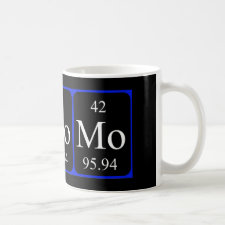
Authors: Zhang N, Hu XL, Guan P, Du CB, Li J, Qian LW, Zhang XY, Ding SC, Li BP
Article Title: Preparation of protein imprinted microspheres using amphiphilic ionic liquid as stabilizer and emulsifier via miniemulsion polymerization.
Publication date: 2017
Journal: Chemical Engineering Journal
Volume: 317
Page numbers: 356-367.
DOI: 10.1016/j.cej.2017.02.066
Alternative URL: https://www.researchgate.net/publication/313864786_Preparation_of_protein_imprinted_microspheres_using_amphiphilic_ionic_liquid_as_stabilizer_and_emulsifier_via_miniemulsion_polymerization
Abstract: Design and preparation of functional materials for selective recognition of biomacromolecules such as proteins, DNA, viruses, and bacteria have always been extremely challenging due to their structure sensitivity. Regrettably, the structure stability of biomacromolecules in molecularly imprinted technology was rarely addressed. This paper presents an effective procedure for the facile preparation of bovine serum albumin (BSA) interfacial molecularly imprinted microspheres (IMIMs), using an imidazole-based amphiphilic ionic liquid (IL), which played a dual role of a stabilizer and emulsifier, via miniemulsion polymerization at 25 °C. In order to prove the stabilizing effect of IL on BSA, a conventional emulsifier sodium dodecyl sulfate (SDS), was also used as the emulsifier for comparison. Different characterization methods were employed to investigate the stability of BSA structure and track the experimental process. The results reveal that the destruction of structure of BSA by amphiphilic IL, 1-dodecyl-3-methylimidazolium chloride ([DMM]Cl), was much lower than that by SDS. Moreover, good selectivity of IMIMs-[DMM]Cl towards BSA was certified in the batch-wise and selectivity rebinding tests, in which an imprinting factor of 3.32 was obtained. This was superior to IMIMs-SDS and demonstrated to be a promising platform for recognition of protein with good specificity
Template and target information: protein, bovine serum albumin, BSA
Author keywords: Biomacromolecular imprinting, Amphiphilic ionic liquid, Protein stabilizer, Miniemulsion polymerization, Interfacial molecularly imprinted microspheres



Join the Society for Molecular Imprinting

New items RSS feed
Sign-up for e-mail updates:
Choose between receiving an occasional newsletter or more frequent e-mail alerts.
Click here to go to the sign-up page.
Is your name elemental or peptidic? Enter your name and find out by clicking either of the buttons below!
Other products you may like:
 MIPdatabase
MIPdatabase









